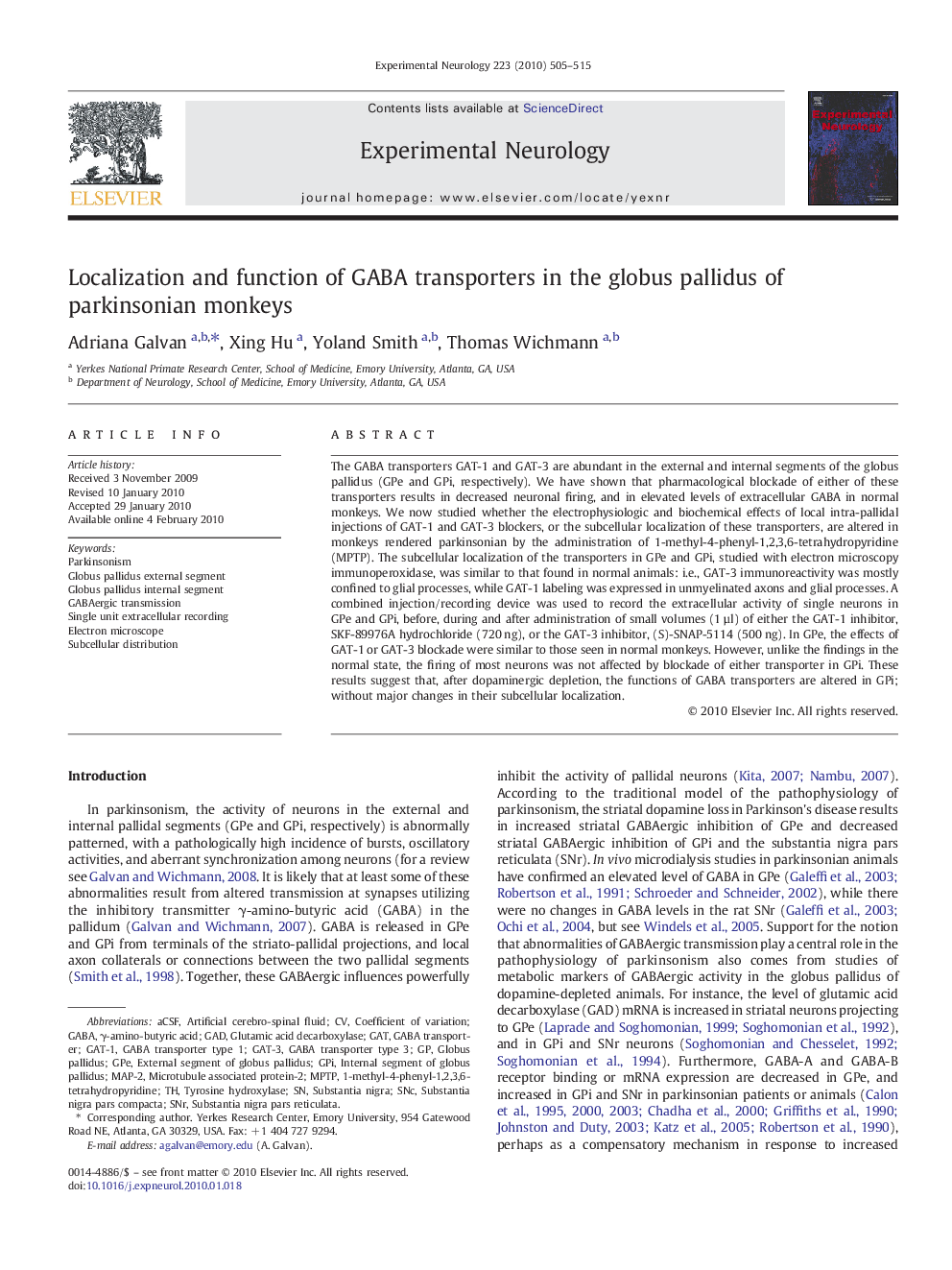| Article ID | Journal | Published Year | Pages | File Type |
|---|---|---|---|---|
| 3055864 | Experimental Neurology | 2010 | 11 Pages |
The GABA transporters GAT-1 and GAT-3 are abundant in the external and internal segments of the globus pallidus (GPe and GPi, respectively). We have shown that pharmacological blockade of either of these transporters results in decreased neuronal firing, and in elevated levels of extracellular GABA in normal monkeys. We now studied whether the electrophysiologic and biochemical effects of local intra-pallidal injections of GAT-1 and GAT-3 blockers, or the subcellular localization of these transporters, are altered in monkeys rendered parkinsonian by the administration of 1-methyl-4-phenyl-1,2,3,6-tetrahydropyridine (MPTP). The subcellular localization of the transporters in GPe and GPi, studied with electron microscopy immunoperoxidase, was similar to that found in normal animals: i.e., GAT-3 immunoreactivity was mostly confined to glial processes, while GAT-1 labeling was expressed in unmyelinated axons and glial processes. A combined injection/recording device was used to record the extracellular activity of single neurons in GPe and GPi, before, during and after administration of small volumes (1 µl) of either the GAT-1 inhibitor, SKF-89976A hydrochloride (720 ng), or the GAT-3 inhibitor, (S)-SNAP-5114 (500 ng). In GPe, the effects of GAT-1 or GAT-3 blockade were similar to those seen in normal monkeys. However, unlike the findings in the normal state, the firing of most neurons was not affected by blockade of either transporter in GPi. These results suggest that, after dopaminergic depletion, the functions of GABA transporters are altered in GPi; without major changes in their subcellular localization.
